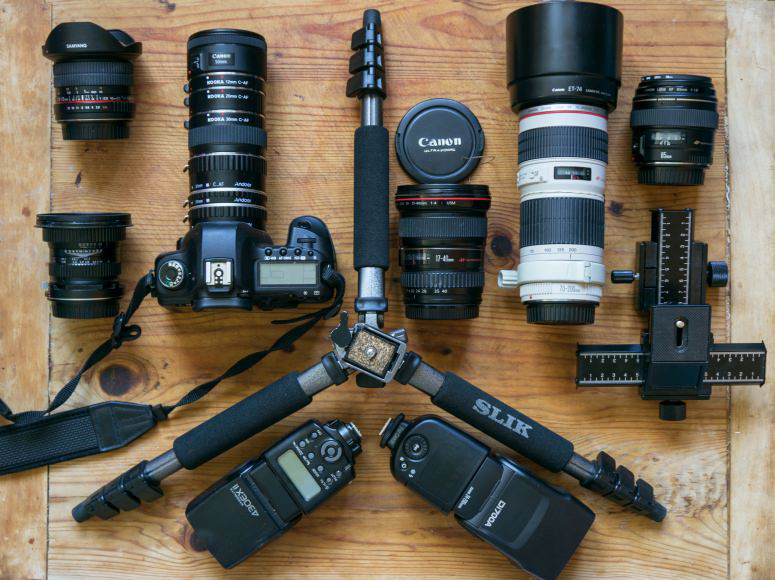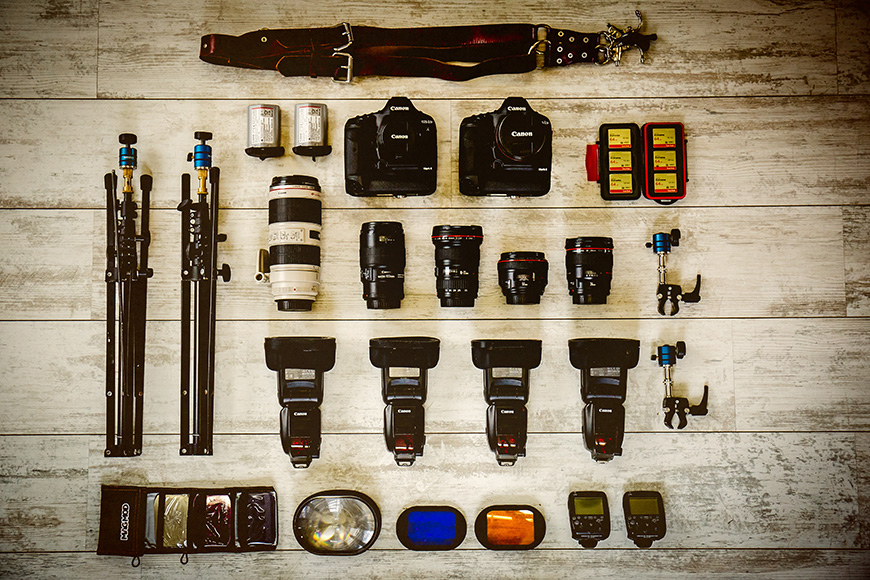
What Is a Canon USM Lens (+ Do You Need One?)
Does the type of motor in your Canon lens make any difference to getting the shot or missing it? This guide to USM lenses will explain what you need to know.
Wondering what the letters USM mean on your Canon lenses?
USM is short for Ultra Sonic Motor.
A lens with USM written on the side will focus faster than a standard model Canon lens.
I use a mixture of USM and standard Canon EF lenses on my Canon 5D Mark III.
There are definitely pros and cons of each type of lens that you should know about.
In this guide, I’ll explain all the various Canon lens types and whether you really need a USM lens to go with your EOS DSLR.
What Are USM Lenses?
What is USM, exactly? USM stands for Ultra Sonic Motor.
USM refers to a type of autofocus motor used in some lenses produced by Canon.
The Canon ultrasonic USM technology is recognized for its quick, precise, and quiet autofocus operation.
This makes USM lenses particularly suitable for photography and videography where speed, accuracy, and low noise are essential.
How Does USM Work?
USM operates based on the principle of piezoelectricity.
In an ultrasonic lens motor, there’s a stationary part known as the stator, and a rotating part called the rotor.
The stator is equipped with piezoelectric ceramic elements.
When an electric field is applied to these elements, they deform, creating ultrasonic vibrations.
These vibrations are then transferred to the rotor, causing it to rotate.
The rotation of the rotor is used to move the lens elements for autofocusing.
This mechanism is largely silent and highly efficient, resulting in swift and precise autofocusing.
Background of USM Technology
USM technology was first introduced by Canon in the 1980s.
It pioneered the use of ultrasonic motors in autofocus lenses, revolutionizing the photography industry.
The first lens to feature this technology was the EF 300mm f/2.8L USM, introduced in 1987.
Since then, Canon has produced a range of lenses featuring USM technology, including both their premium ‘L’ series lenses and more affordable options.
Despite the introduction of newer autofocus technologies like STM (Stepping Motor), USM remains a popular choice due to its balance of speed, accuracy, and near-silent operation.
Over time, Canon has introduced variations of the original USM, such as Ring-type USM, Micro USM and Nano USM, to cater to different lens designs and usage requirements.
What are the Advantages and Disadvantages of USM Lenses?

Adrian Borda
Advantages of Canon USM Lenses
- Speed: USM lenses are known for their fast autofocus speeds. The ultrasonic motor can move the lens elements quickly, which is especially useful for shooting fast-moving subjects.
- Quiet Operation: USM lenses are relatively quiet compared to other types of autofocus motors. This makes them a good choice for situations where noise can be disruptive, such as during video recording or in quiet environments.
- Precision: The USM motor offers precise control over the lens elements, allowing for very accurate focusing. This can result in sharper images.
- Manual Focus Override: Most USM lenses offer full-time manual focus override, allowing the photographer to manually adjust focus without having to switch out of autofocus mode.
Disadvantages of Canon USM Lenses
- Cost: USM lenses tend to be more expensive than lenses with other types of motors due to the complexity and cost of ultrasonic motor technology.
- Size and Weight: The inclusion of the USM motor can add to the size and weight of the lens, making it less portable and potentially more tiring to use for extended periods.
- Potential for Failure: Like any mechanical system, USM motors can fail. While this is relatively rare, a failed USM motor can be costly to repair.
- Not Always the Best for Video: While USM lenses are quieter than many alternatives, newer technologies like Canon’s STM (Stepping Motor) lenses are often even quieter and smoother when it comes to autofocus adjustments during video recording.
My Experiences Using USM Lenses at Weddings
As a wedding photographer, I’ve had the opportunity to extensively use both USM and non-USM lenses with my Canon 5D Mark III.
I recall shooting a wedding once with an older 24-70mm non-USM lens. The venue was a beautifully rustic old barn, filled with an air of nostalgia and romance, but the lighting was less than ideal.
While the lens was sharp, the autofocus was noticeably slower, and I could hear the motor whirring as it hunted for focus.
There were definitely a few magical moments that I missed capturing due to the slower autofocus speed.
Fast forward to another wedding a few months later. This time, I’d upgraded to a newer Canon 24-70mm f/2.8L II USM.
The wedding took place in a similar setting—an old church, dimly lit, brimming with emotion and cherished moments.
As soon as I started shooting, I noticed the difference. The USM lens was remarkably fast and quiet. It was as if the lens was intuitively keeping pace with my thoughts, smoothly and silently focusing on the moments I wanted to capture.
The ability to manually override the focus without switching out of autofocus mode was another game-changer for me.
When the bride threw the bouquet, I was tracking the flowers in autofocus mode.
But then I saw the anticipation on one of the bridesmaid’s faces and wanted to quickly refocus on her.
With the USM lens, I could instantly adjust the focus manually without missing a beat.
While both lenses produced beautiful images, the USM lens undoubtedly gave me an edge.
Its speed, quietness, and ability to instantly manually override the focus made it a valuable tool in my kit.
Despite the higher price, I feel the investment in USM lenses has paid off in the images I’ve been able to capture and the ease of use during high-pressure events like weddings.
Canon USM Lenses List
EF Lenses:
- Canon EF 14mm f/2.8L II USM
- Canon EF 20mm f/2.8 USM
- Canon EF 24mm f/1.4L II USM
- Canon EF 28mm f/1.8 USM
- Canon EF 35mm f/1.4L II USM
- Canon EF 50mm f/1.2L USM
- Canon EF 85mm f/1.2L II USM
- Canon EF 100mm f/2 USM
- Canon EF 100mm f/2.8 Macro USM
- Canon EF 135mm f/2L USM
- Canon EF 200mm f/2L IS USM
- Canon EF 300mm f/2.8L IS II USM
- Canon EF 400mm f/2.8L IS III USM
- Canon EF 500mm f/4L IS II USM
- Canon EF 600mm f/4L IS III USM
- Canon EF 800mm f/5.6L IS USM
- Canon EF 16-35mm f/2.8L III USM
- Canon EF 24-70mm f/2.8L II USM
- Canon EF 70-200mm f/2.8L IS III USM
- Canon EF 70-200mm f/4L IS II USM
- Canon EF 100-400mm f/4.5-5.6L IS II USM
- Canon EF 200-400mm f/4L IS USM Extender 1.4x
EF-S Lenses:
- Canon EF-S 10-22mm f/3.5-4.5 USM
- Canon EF-S 15-85mm f/3.5-5.6 IS USM
- Canon EF-S 17-55mm f/2.8 IS USM
- Canon EF-S 60mm f/2.8 Macro USM
RF Lenses:
- Canon RF 15-35mm F2.8 L IS USM
- Canon RF 24-70mm F2.8 L IS USM
- Canon RF 70-200mm F2.8 L IS USM
- Canon RF 50mm F1.2 L USM
- Canon RF 85mm F1.2 L USM
- Canon RF 28-70mm F2 L USM
- Canon RF 100-500mm F4.5-7.1 L IS USM
What are the Canon Lens Types?

Ralf Czogallik
Here are the 4 main types of lenses Canon manufactures:
- EF (Electro-Focus) lenses: These lenses are designed for Canon DSLRs with full-frame sensors. They will also work on Canon DSLRs with APS-C sensors (like the EOS Rebel series), where they provide a 1.6x crop factor.
- EF-S lenses: These lenses are specifically designed for Canon DSLRs with APS-C sensors, like the EOS Rebel series or the EOS 80D. EF-S lenses provide a narrower field of view because of the smaller sensor size.
- EF-M lenses: these are designed for Canon’s EOS M series of mirrorless cameras such as the Canon M50, which have APS-C sensors.
- RF lenses: These are the latest series of lenses from Canon, designed for their EOS R series of full-frame mirrorless cameras such as the Canon R6.
See also: What are the best Canon cameras?
USM Lens FAQs
Canon STM vs USM Lens: What’s the Difference?
STM (Stepping Motor) lenses focus more quietly and smoothly, making them ideal for video recording. USM (Ultrasonic Motor) lenses, on the other hand, focus more quickly and accurately, which is beneficial for still photography.
Which lens is better STM or USM?
The “better” option depends on your needs. STM lenses are typically better for video due to their silent and smooth focus, while USM lenses are often better for still photography due to their speed and precision.
Canon IS vs USM Lens: What’s the Difference?
IS (Image Stabilization) and USM (Ultrasonic Motor) aren’t directly comparable because they serve different purposes. IS reduces blur caused by camera shake, while USM provides fast, silent, and precise autofocus.
What is the difference between USM and Nano USM?
Both are types of autofocus motors. USM focuses quickly and quietly, while Nano USM combines the benefits of STM and USM, offering both the smoothness of STM (ideal for video recording) and the speed of USM (great for still photography).
Why are USM lenses more expensive?
USM lenses are often more expensive because they incorporate more advanced technology that allows for faster, quieter, and more precise autofocus, which tends to increase manufacturing costs.
Canon Lenses – Final Words
My recommendation is to not get too caught up about whether or not you own any USM lenses or STM lenses.
If you have one, great – but if you have a standard Canon lens, don’t fret!
Thanks to modern Canon DSLR and mirrorless cameras, the autofocus systems are so advanced that even cheaper non USM or STM lenses focus very fast.
If you absolutely need a lens with a silent motor (most relevant for video shooters who prefer auto-focus over manual focus), STM lenses are a great investment.
Similarly, if your work depends on getting every shot in sharp focus, USM lenses will provide more accuracy.
I managed to do just fine for years using my Canon DSLR without investing in any STM USM lenses and I’m sure you can too.













